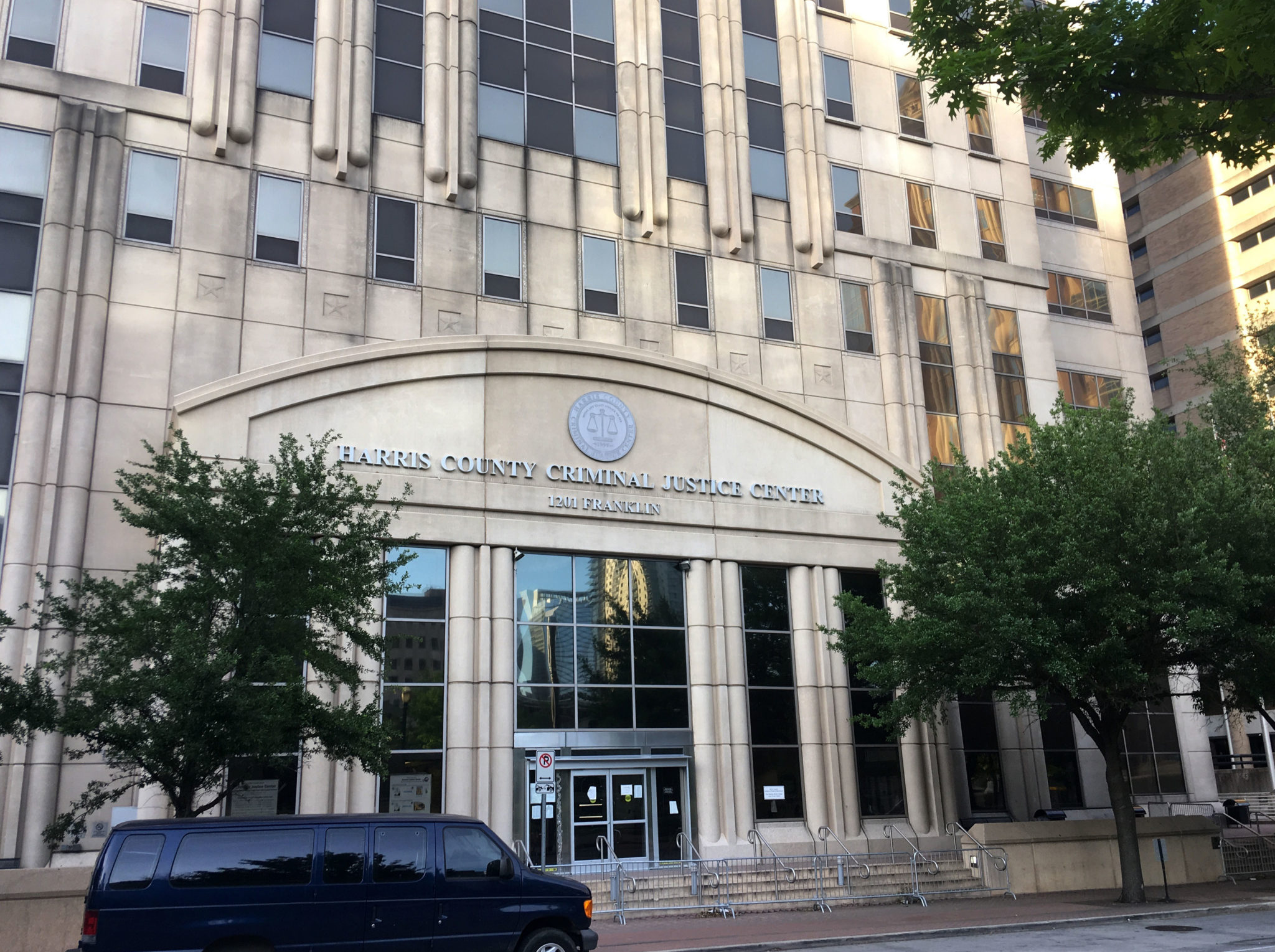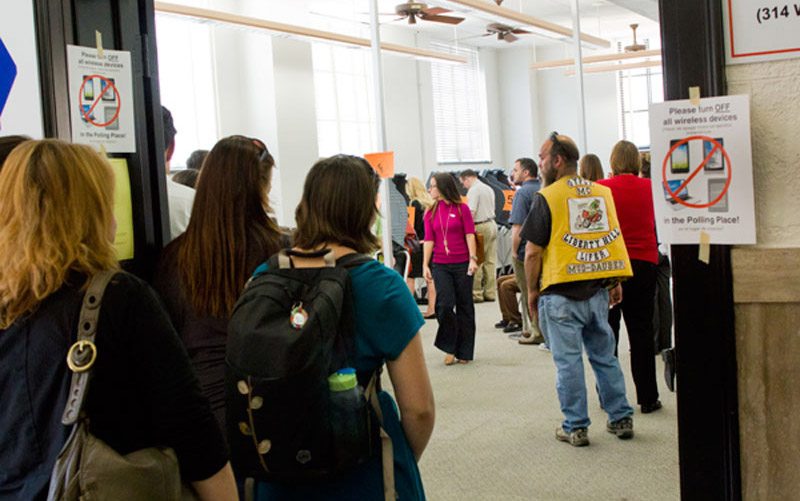
What Must Happen for Texas to Turn Blue

You hear the question often: Is Texas becoming a blue state?
Since President Obama won reelection in November with an emerging Democratic coalition of African-Americans, Latinos, women and young voters, political pundits have been talking incessantly about the potential of Texas going Democratic. MSNBC has made it an obsession.
The creation of Battleground Texas—a group formed by former Obama campaign staffers to make the Lone Star State competitive—has only fueled national media speculation that Texas is going blue. (The Observer explore this subject at an Austin panel—“Will Texas Turn Blue?”— Thursday night, May 23, at 8 p.m. at Scholz Garten.)
On the ground, however, Texas remains as Republican as it gets. The GOP boasts comfortable majorities in both chambers of the Legislature and controls every statewide office; in fact, Democrats haven’t won a statewide race in Texas since 1994, a 19-year losing streak that spans 101 defeats.
What has Democrats hoping they can reverse that trend is the state’s shifting demographics. Namely, the state’s Latino population is booming. Latinos tend to vote Democratic. Therefore, the theory goes, given enough time, Democrats could start winning statewide office again. (Some say 2014, others 2016, 2018, 2020. Some say it will never happen.)
The flaw in the theory, as many Democratic strategists and progressive organizers will acknowledge, is that you should never assume any group of voters will stick with you indefinitely.
Another problem is that Texas Latinos go to the polls at a very low rate, compared to Anglo and African-American voters, and compared to Latino voters in other states. If Democrats don’t increase the voter turnout rate among Latinos, they might be waiting a long time for the demographics changes to deliver them the state.
Then there’s the Republican Party, which isn’t going to sit idly by and let the state go Democratic. The state GOP and independent group Hispanic Republicans of Texas have been working for several years to attract more Latino candidates and voters to the party.
So what must happen for Democrats to break the GOP’s hold on Texas? Increasing Latino turnout is a must, especially in the Houston area. But there’s more to it. As polling commissioned by the Democratic group Back to Basics PAC in Harris County during the 2012 election shows, Democrats have no lock on the Latino vote. In fact future control of Texas may hinge on which Latino voters show up at the polls.
For Texas to ever become competitive for them, Democrats will need to lock down Harris County. Home to 4.2 million Texans, almost 70 percent of whom are non-white, Houston is the present and future face of Texas. Former state demographer Steve Murdock has estimated that by 2040, Harris County will have 516,000 fewer Anglos than in 2000 while the number of Latinos will surge by 2.5 million. As Houston goes, so goes Texas.
Given that Anglos are already a minority of Harris County’s population, you would think the Houston area would be ripe for Democratic success. Yet the county has proved an elusive prize. In recent elections, Harris County has been evenly divided.
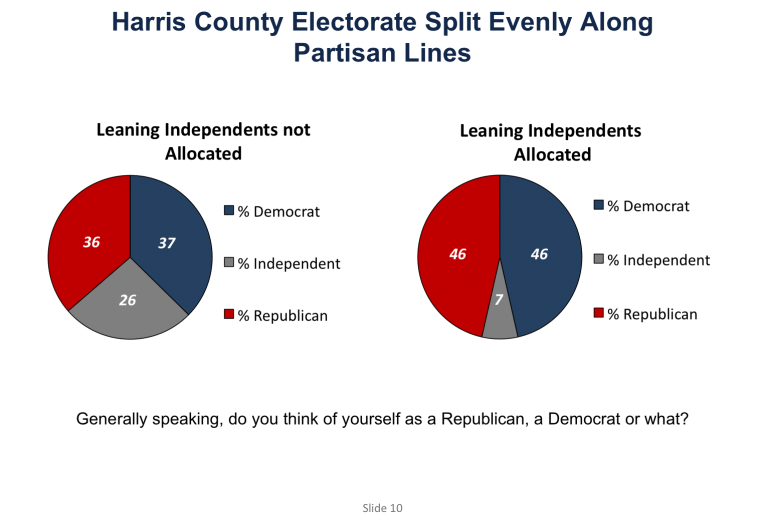
In 2008, Barack Obama won the county by a little more than 19,000 votes. In 2012, he did slightly worse, beating Mitt Romney by just 971 votes.
Latinos, despite representing 40 percent of the population of the county, constitute only 15 percent or so of the electorate. Partly that’s due to how young the Latino community is and the presence of many non-citizens. But it’s also due to an abysmal turnout rate that’s hampering Democratic efforts to turn Houston—and by extension, Texas—blue.
So if you’re looking for signs that Democrats are making any progress in Texas, you need to look at Houston. More specifically, you need to see if Democrats are harnessing the booming Latino population there.
But hidden in the 2012 election data were trends that should have Democrats worried. In Harris County at least, Republicans showed surprising strength among some Latinos. The Latino community is hardly monolithic. In fact, the Back to Basics post-election survey of Harris County identified “two Hispanic worlds”—one that votes often and splits its vote between Republicans and Democrats, and another that is overwhelmingly favors Democrats but tends not to vote.
The survey found that Latinos who are less likely to vote—and who tend to be working class and less educated—overwhelmingly favored Obama in 2012. Eighty four percent of these “low-propensity” voters said they favored Obama versus just 15 percent for Romney, according to the polling obtained by the Observer.
The obvious conclusion is that getting these voters to the polls can do wonders for Democrats, said Jeff Rotkoff, who heads the PAC. 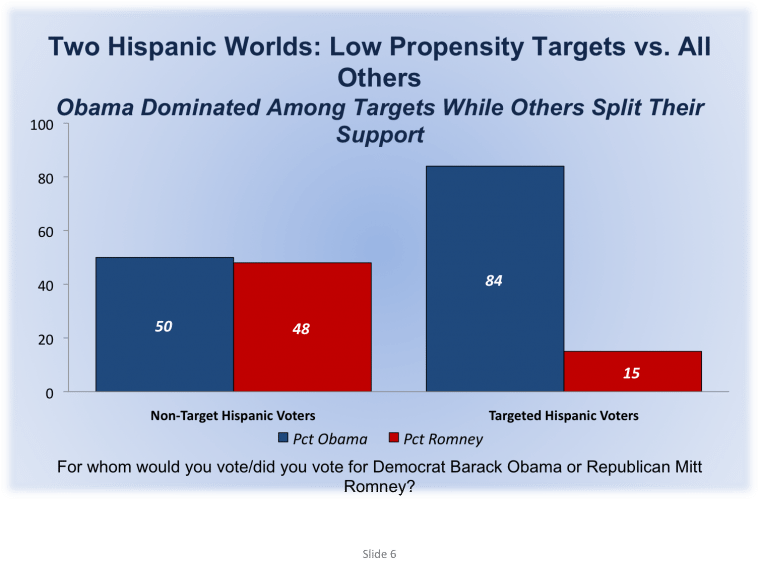
But the remainder of the Latino community in Houston was almost evenly split between Obama and Romney.
Perhaps more troubling for Democrats thinking of running for governor or other statewide office is that the survey of Latino voters found significant defections to tea partier Ted Cruz.
While Obama carried Harris County Latinos 59-40 overall, the Democratic candidate for U.S. Senate, Paul Sadler, took only 53 percent to Cruz’s 46 percent share. Not only did Sadler run behind Obama among Harris County Latinos, but among “high propensity” Latinos—those most likely to vote—Cruz bested Sadler 53-44 percent. That’s worth repeating: Among Latinos most likely to vote, Ted Cruz won a majority in Harris County.
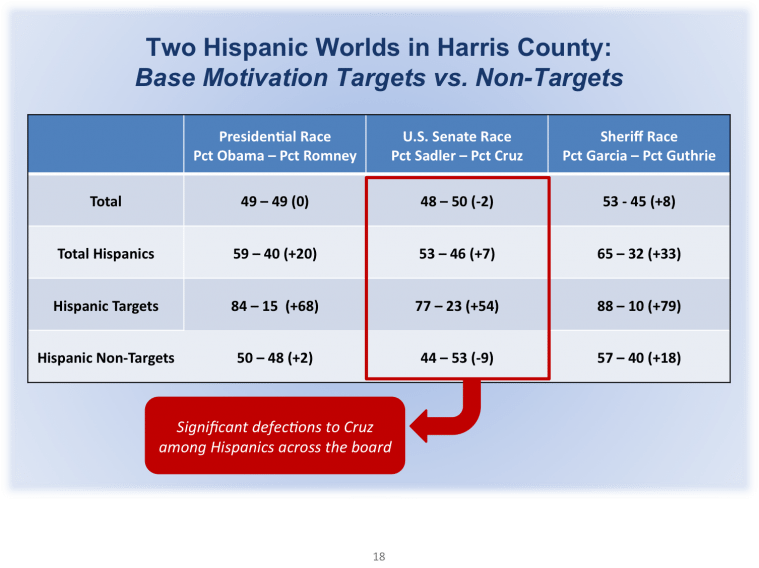
On the other hand, popular Harris County Sheriff Adrian Garcia outperformed Obama among Latinos significantly, beating his Republican opponent 65 percent to 32 percent.
The lesson is that Latinos are a diverse bunch and that many—the ones who tend to vote at higher rates—are willing to vote for the right Republican.
In short, the 2012 election returns in Harris County add a wrinkle to the conventional wisdom that increased Latino turnout will aid Democrats. If the polling is correct, Democrats will takeover Harris County and Texas only if they can turnout the “low propensity” voters most likely to support Democrats.
Otherwise, Republicans have shown they can win over enough “high propensity” Latinos to make a Democrat winning statewide in Texas difficult.
Some Texas progressives say they’re already making significant gains in Harris County due to efforts organizing and mobilizing in minority communities with traditionally low voter-turnout rates.
In four out of five heavily Latino legislative districts targeted by Texas Organizing Project, a group trying to mobilize and engage Latinos, as well as more partisan Democratic outfits, turnout increased in largely Latino districts—by 1.6 percent in Senate District 6 (Sen. Sylvia Garcia ) to 10 percent in House District 143, represented by Democratic Rep. Ana Hernandez Luna.
Texas Organizing Project (TOP) specifically targeted minority communities with the highest concentrations of “low-propensity” voters, from Pasadena to Katy to the East End and the north side of Houston. The group’s goal was to talk to voters five times by knocking on doors three times and calling twice.
Texans for America’s Future, a super PAC supporting Obama, also targeted low-propensity voters in Harris County, said Rotkoff, the group’s founder. The PAC’s post-election survey points to the coalition the Democrats need to build: an amalgam of women, working class folks and minorities.
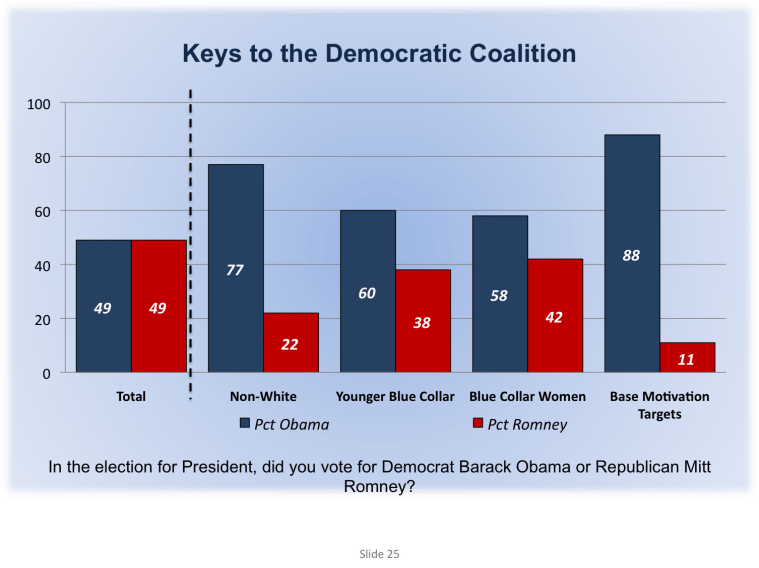
Many Texas Democrats insist that they’ve got the message, and are serious about civic engagement and turnout. “The reality is you don’t win new voters and get them into the process by ignoring them 18 months every two years,” says Matt Glazer, executive director of the progressive group Progress Texas. “The proof of concept is happening and now people are working in an unprecedented way.”
He points to the 2012 results in Houston as the first fruits of their labor. “The beast has been stirred a a little bit.”

